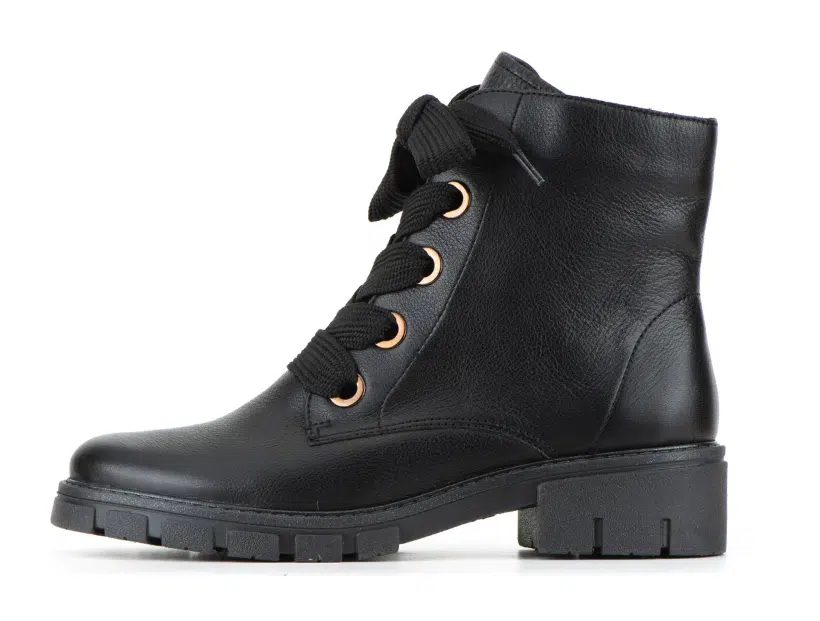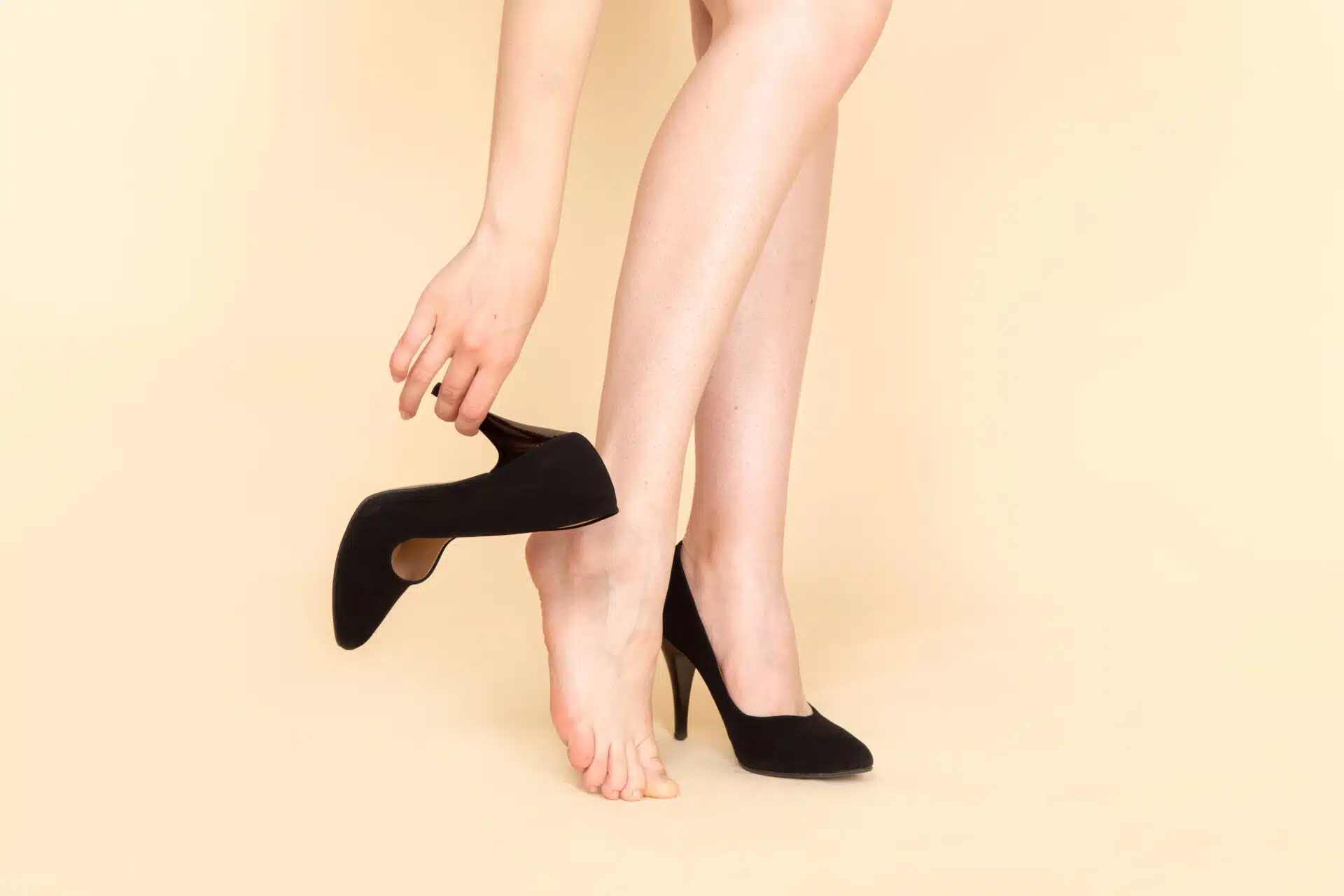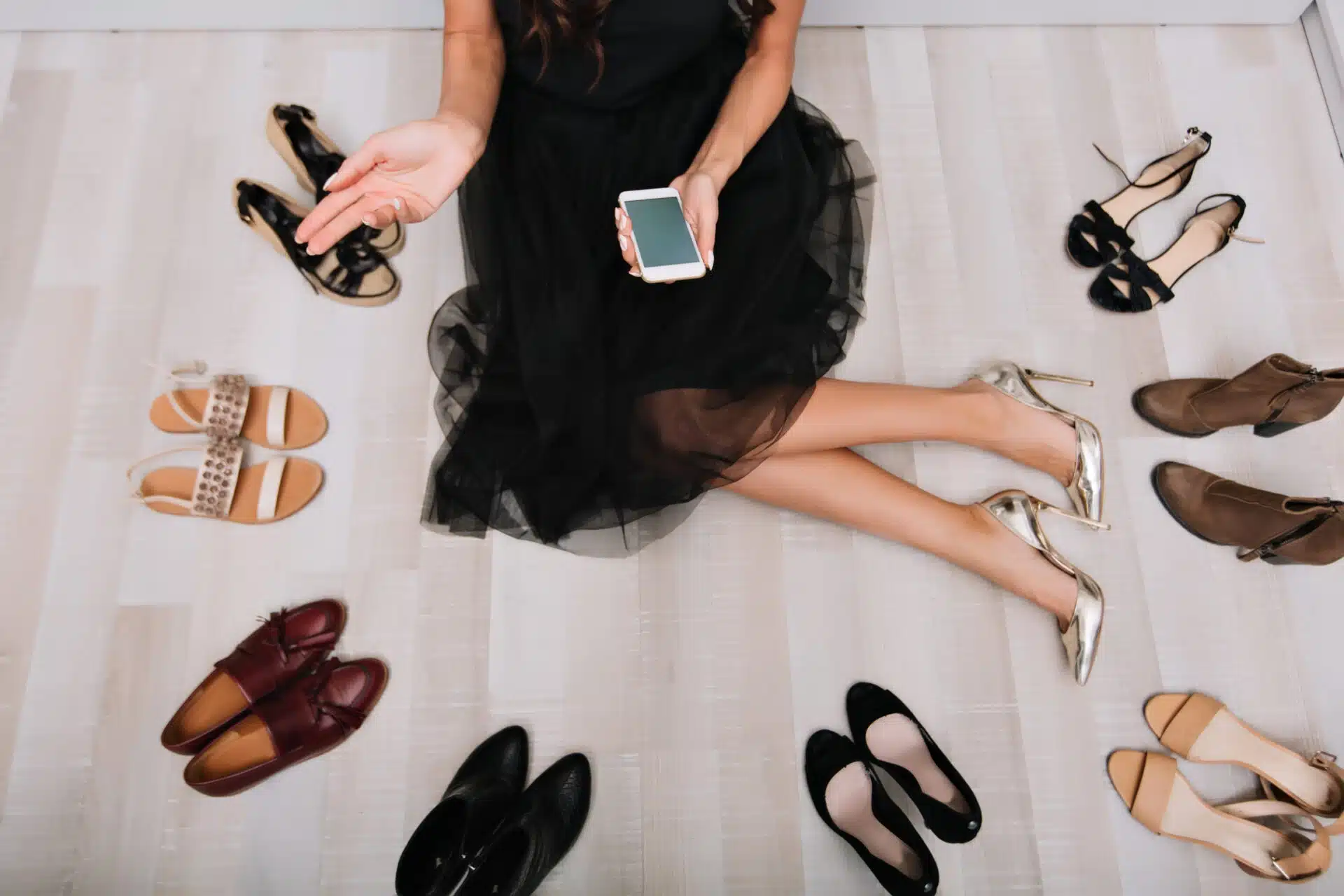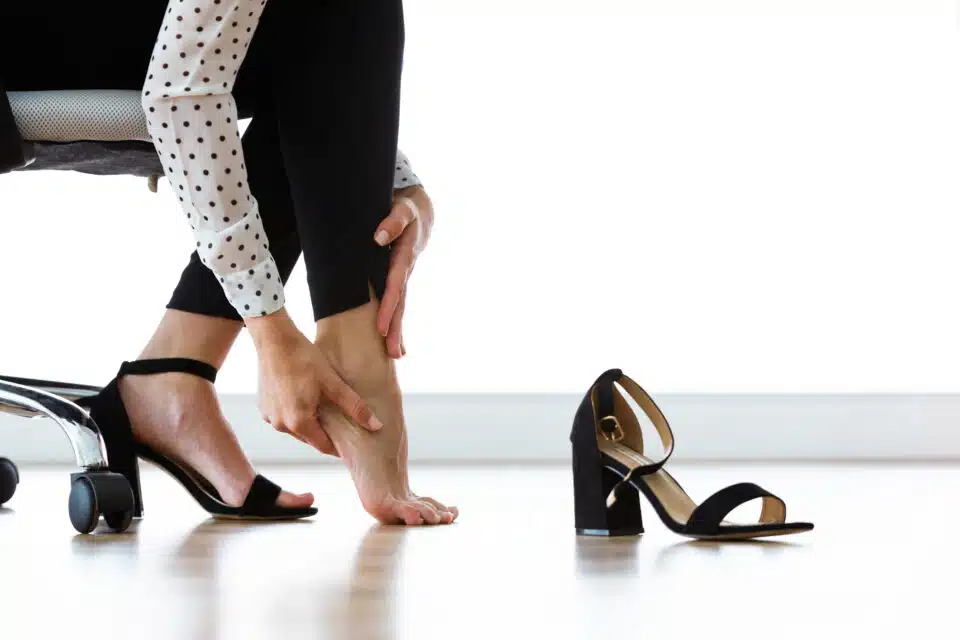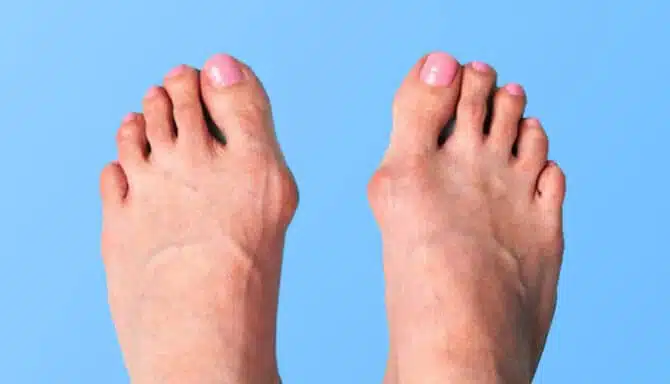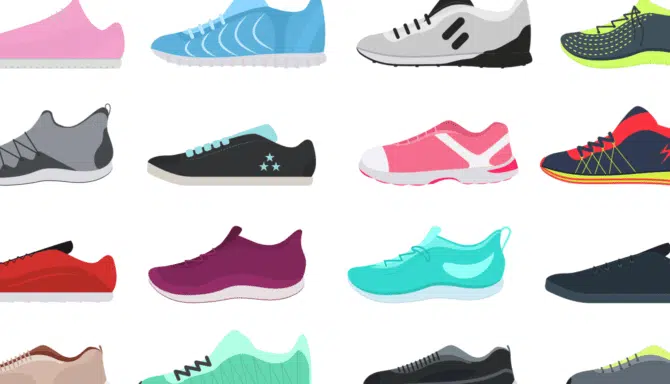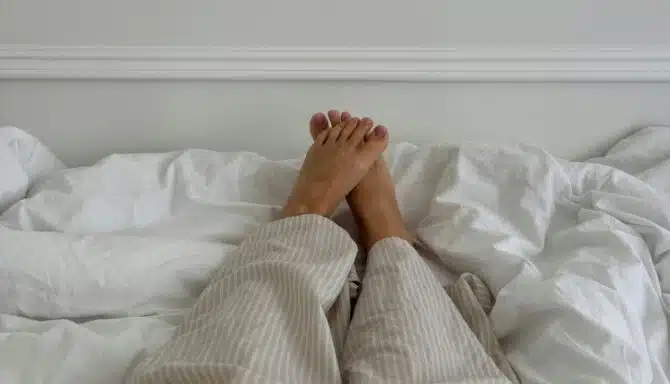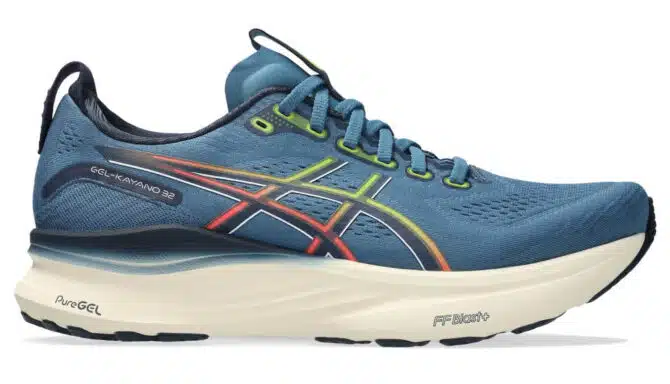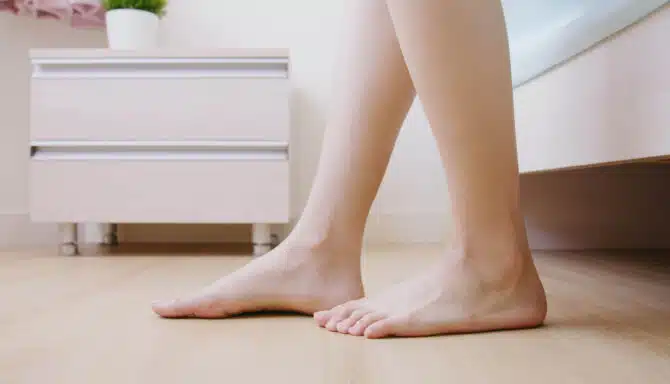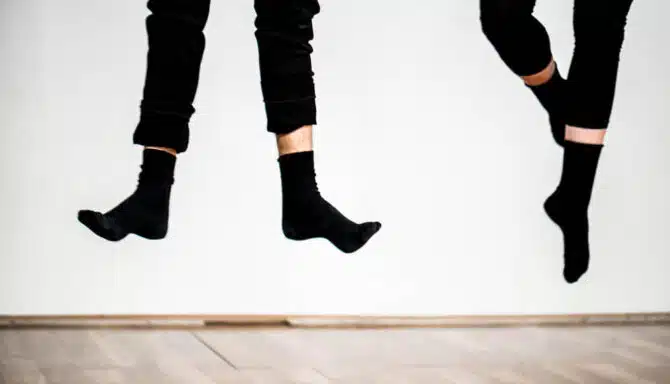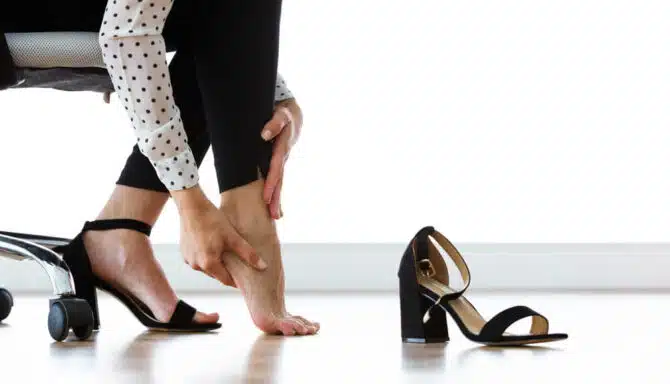January 9, 2025
Living with high arches can be a challenge, but if you pay attention to your foot health, you can manage them effectively. Let’s explore what high arches are, their impact, and our top 4 tips for living with high arches.
What Are High Arches?
https://www.youtube.com/shorts/13rmyA18ZzY
High arches (pes cavus) is a condition where one has - you guessed it - abnormally high foot arches. They are essentially the opposite of flat feet, which are characterized by having a minimal or non-existent arch. High arches may be hereditary or caused by neurological disorders such as Charcot-Marie-Tooth disease.
From a biomechanical perspective, the raised arch reduces the surface area in contact with the ground, which can result in an uneven distribution of weight across the foot. High arches often place excessive pressure on the ball and heel of the foot, leading to discomfort, instability, potential injuries and chronic foot conditions. High arches also impairs shock absorption, which causes progressive wear-and-tear on the joints over time.
Side effects of high arches include foot pain, issues like calluses and hammertoes, and an increased risk of ankle sprains. Individuals can also develop conditions like plantar fasciitis (this can also frequently occur in people with flat feet), or Achilles tendonitis due to the strain placed on the muscles and ligaments. The lack of shock absorption can also reverberate up the body and lead to joint disorders like arthritis.
High arches are associated with supination, also called underpronation, a condition where the foot rolls outward during movement. This gait pattern places additional stress on the outer edges of the foot and ankle, leading to instability and overuse injuries. Consequently, individuals with high arches should pay close attention to their walking or running patterns to prevent long-term complications.
High arches can also lead to changes in posture and gait. This, combined with the lack of shock absorption, may result in secondary issues such as knee, hip, or back pain over time.
Tips for Living with High Arches
https://www.youtube.com/shorts/2et0ZUSx4OM
Living with high arches requires thoughtful adjustments to your daily routine and habits. Here are some ways to keep your feet comfortable and supported:
1. Choose the Right Footwear
Proper footwear is essential for managing high arches. Opt for shoes with ample shock absorption, arch support and cushioning. Shoes with flexible midsoles or rocker soles can also be very helpful: People with high arches tend to have rigidity in the toes and ankles due to joint wear-and-tear, which means the toes and ankles do not flex as much as it should during the gait cycle. A flexible midsole and rocker sole counteracts this and make movement easier. Likewise, people with high arches should avoid high heels, rigid soles, and unsupportive flats, which can exacerbate discomfort.
Due to supination, people should look for cushioning running shoes. These provide balanced cushioning and plenty of shock absorption and flexibility to support the foot’s natural motion and healthy biomechanics. This design helps distribute pressure evenly, enhances comfort, and reduces the risk of injury.
2. Wear Custom Orthotics
Custom orthotics are a valuable tool for redistributing pressure evenly across the foot. You can work with a specialist, like a podiatrist or chiropodist, at a foot clinic to create orthotics tailored to your specific needs.
Scientifically, custom orthotics help correct abnormal biomechanics, such as excessive supination, by stabilizing the foot and encouraging a more neutral gait. They can also provide added cushioning to reduce the impact of your stride on your joints. Over time, this can alleviate pain, reduce fatigue, and prevent the development of secondary issues in the knees, hips, or lower back.
3. Maintain a High Arch Foot Care Routine
Foot baths and massages can soothe foot pain, relax the muscles in your feet and boost blood circulation.
Soak your feet in warm water with Epsom salts, or foot bath products from reputable companies like Gehwol, to alleviate tension. Gehwol products, such as their Herbal Foot Bath, are available to buy at our Toronto foot clinic, Feet First Clinic!
Gently massage the arch, heel, and toes to improve circulation and relieve tightness. Read this article to learn how to give yourself a foot massage from home.
4. Try Stretching and Strengthening Exercises
Foot stretches and exercises play a crucial role in managing high arches by improving flexibility, reducing muscle tightness, and promoting better blood circulation in the feet. High arches can lead to stiffness and imbalances in the tendons and muscles, increasing the risk of discomfort and injury. Over time, these stretches can support better alignment and strengthen the foot's ability to handle daily stress, making them an essential part of high arch foot care.
Here are some simple routines you can try today!
Toe Flex and Raise: While standing, plant your toes and lift your heels off the ground. Hold for 15-30 seconds and repeat 5 times.
Seated Towel Stretch: Loop a towel around your foot and gently pull it toward you, holding for 15-30 seconds.
Pen Pick-ups: Stay seated. Then, lay three pens, or similarly shaped objects, in front of you–spaced apart evenly. Using your toes, pick up each pen and place it in a bowl.
Seated Toe Pulls: Sit on a chair and cross one ankle over the opposite knee. Grab the top of your foot and gently pull it toward your body until you feel a stretch on the top of your foot. Hold for 15-30 seconds and repeat 2-3 times per foot.
https://www.youtube.com/shorts/-EeyHTdkrEs
Additional High Arch Pain Relief Tips
More practical approaches for high arch pain relief include:
Ice Therapy: Apply an ice pack to sore areas for 15-20 minutes to reduce inflammation and soothe discomfort. If your feet are particularly painful, take this one step further by practicing the RICE method (Rest, Ice, Compression and Elevation).
Supportive Inserts: Use over-the-counter insoles with firm arch support. A good choice for high arches is the Superfeet Green or the Superfeet Run Cushion High Arch insoles. However, talk to a podiatrist or chiropodist about if you need more customized support from orthotics.
Medication: Nonsteroidal anti-inflammatory drugs (NSAIDs) may help manage pain.
Seek Professional Help: Visit a podiatrist or chiropodist for a biomechanical assessment to determine how prominent your high arches are, how they are affecting your body, and any contributing biomechanical factors. These foot specialists can also fit you for custom orthotics, provide shoe recommendations and curate a full treatment plan.
When to See a Specialist For High Arches
If high arches are causing persistent discomfort or limiting your mobility, it’s essential to seek professional advice. As we mentioned, visiting a foot clinic ensures access to personalized treatment plans. Consulting a foot specialist is especially important if you notice:
Increased frequency of ankle instability or sprains.
Development of deformities like hammertoes, claw toes, or bunions.
Chronic pain that makes simple activities like walking increasingly difficult.
A foot specialist can recommend the appropriate treatments, depending on the severity of your condition. They may also suggest physical therapy to improve balance, coordination, and overall foot function.
Regular check-ups and assessments with a podiatrist or chiropodist can prevent seemingly minor issues from becoming major concerns. Don’t hesitate to seek their expertise!
https://www.youtube.com/shorts/XZUfVhny5pY
